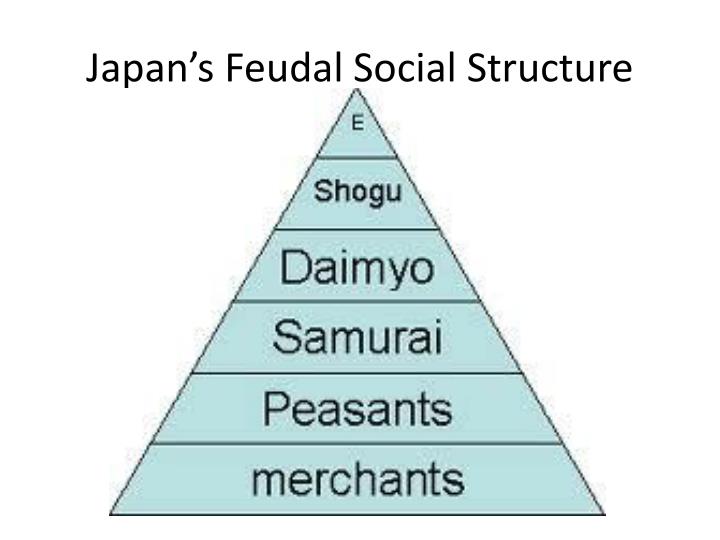
PPT Japanese Feudalism PowerPoint Presentation ID2941593
Popular culture Contemporary Japanese society is decidedly urban. Not only do the vast majority of Japanese live in urban settings, but urban culture is transmitted throughout the country by a mass media largely concentrated in Tokyo.
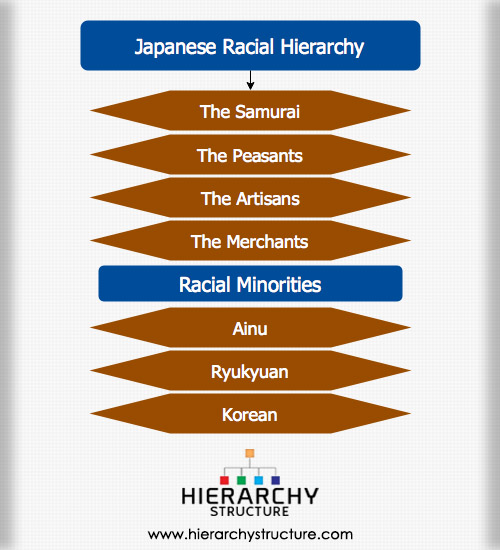
Japanese Racial Hierarchy Japanese Social Structure
Follow the hierarchy order.. Business etiquette in Japan is highly influenced by social structure and culture, cultivating a very specific way of behaving during social interactions and business deals. Understanding the business culture do and don'ts in addition to Japanese body language, negotiations and ethics can help.

Social Structures Medieval Japan 'Power and Perspective' LibGuides at Mount St Benedict College
Feudal Japan had a four-tiered social structure based on the principle of military preparedness. At the top were the daimyo and their samurai retainers. Three varieties of commoners stood below the samurai: farmers, craftsmen, and merchants. Other people were excluded entirely from the hierarchy, and assigned to unpleasant or unclean duties such as leather tanning, butchering animals and.

PPT Recap Geography, Timeline, Social Pyramid PowerPoint Presentation ID3069989
Social hierarchy Ancient Japan social hierarchy demonstrates the classification of Japanese people on the basis of certain rules and conditions that were followed by Japanese society in ancient times. These social classes were categorised based on power as well as prestige.

Japanese Feudalism World History Teaching, Modern World History, Asian History, History Class
1. Emperor The Emperor is considered the highest position in Japanese society. Although the Emperor no longer holds political power, they are a symbol of the nations unity and continuity. 2. Nobility and Aristocracy Traditionally, the noble class held considerable influence and wealth.
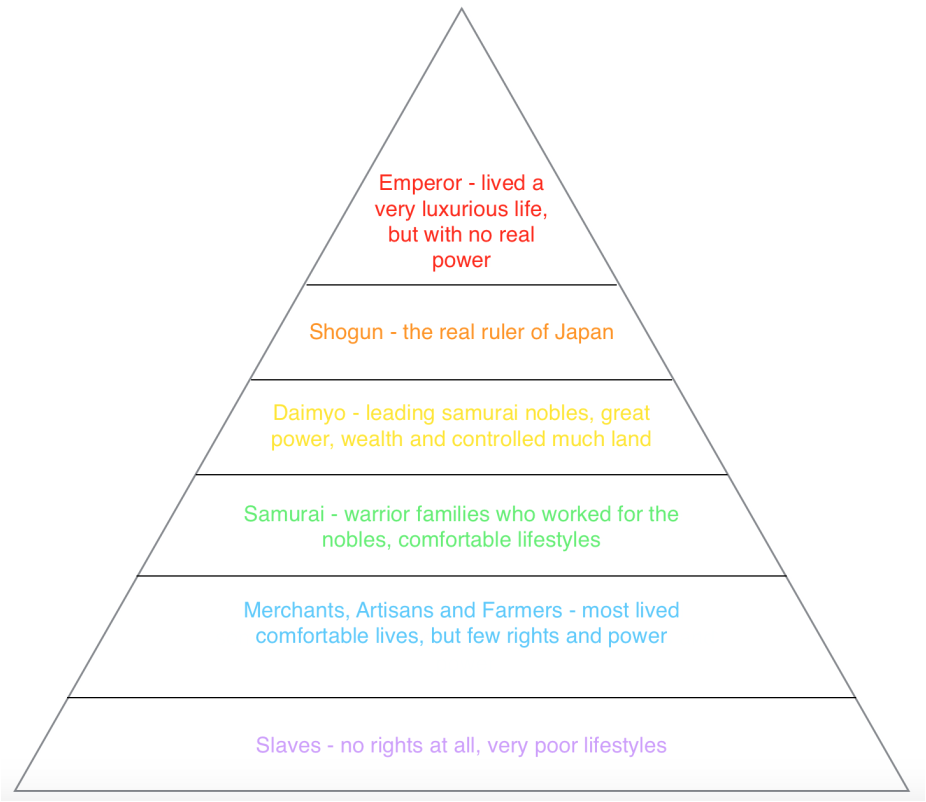
Feudal System Pyramid Shogunate Japan by Britta Hughes
Japanese social hierarchy portrays a systematic classification of all the social classes in the Japanese social society. This hierarchy is quite different from the social system that was employed in the ancient Japan as since the ancient times society has undergone several structural changes.
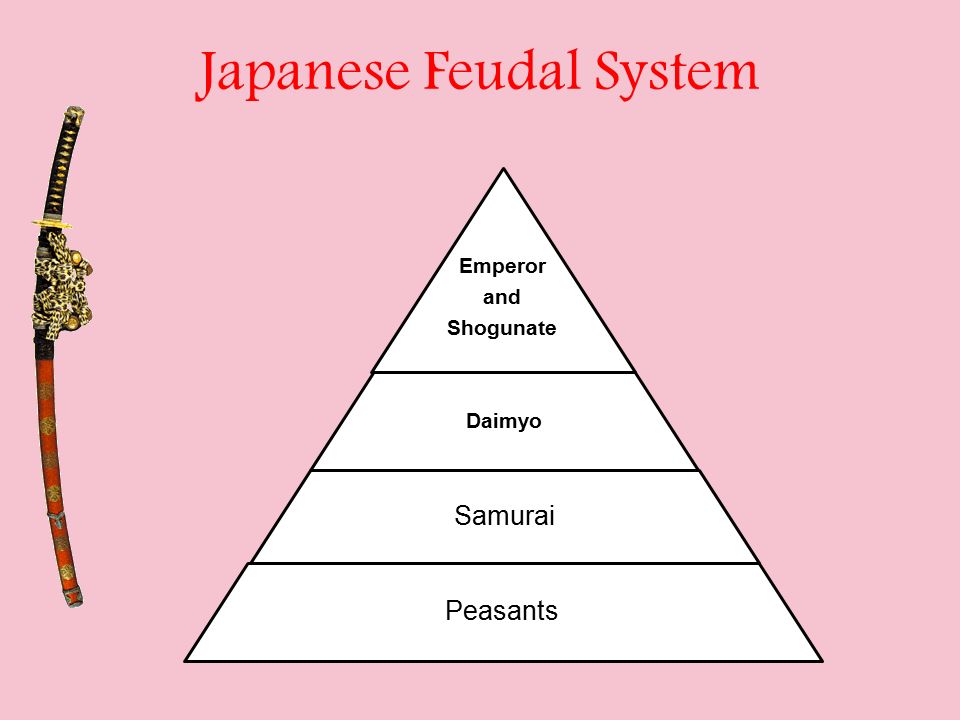
Japanese Feudal Society Mr. Henson History
The Ancient Japanese Society possessed different Social Classes based on the Power and prestige. Ancient Japanese Hierarchy was majorly divided into two categories namely as the Noble Class and the Peasant Class.

PPT Japanese Social Hierarchy During Tokugawa Period PowerPoint Presentation ID3296056
When it comes to feudal Japan social hierarchy, there are a lot of things that are significantly different from today's society in Japan and in the Western country. For example, merchants and artists in feudal japan were considered at the very bottom of the hierarchy. Feudal Japan social class distributions
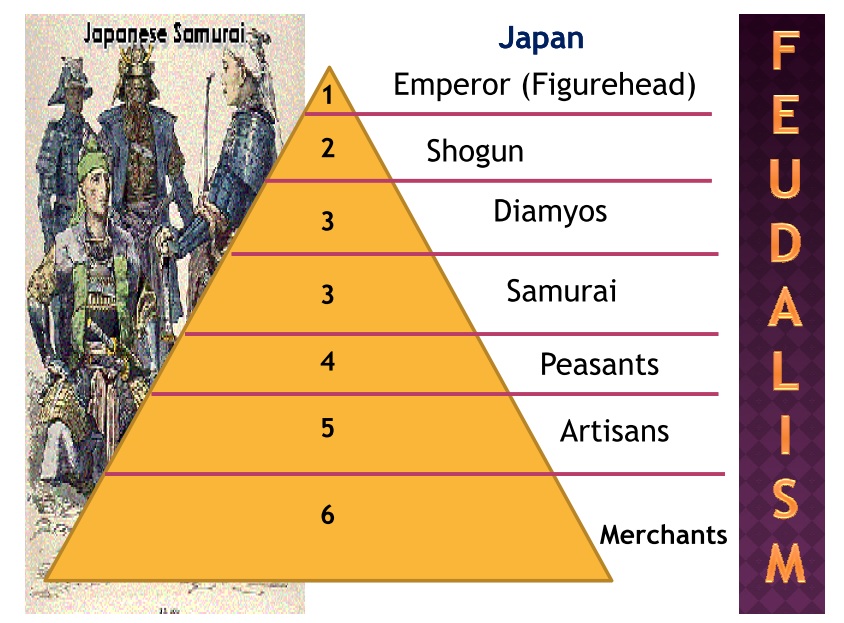
Social Structure Medieval Japan
During the Edo (Tokugawa) period (1603-1867), there was a social division of the populace into four classes—warrior, farmer, craftsman, and merchant—with a peer class above and an outcast class below.

FileEdo social structure.svg Wikimedia Commons
After 150 year of civil war, the Shogunate in Japan was determined to enforce and maintain a stable society. The Shogunate further extended its control of the people through a class system with social and economic constraints. The highest class was composed of the samurai, followed by farmers, craftsmen, and at the lowest level, merchants.
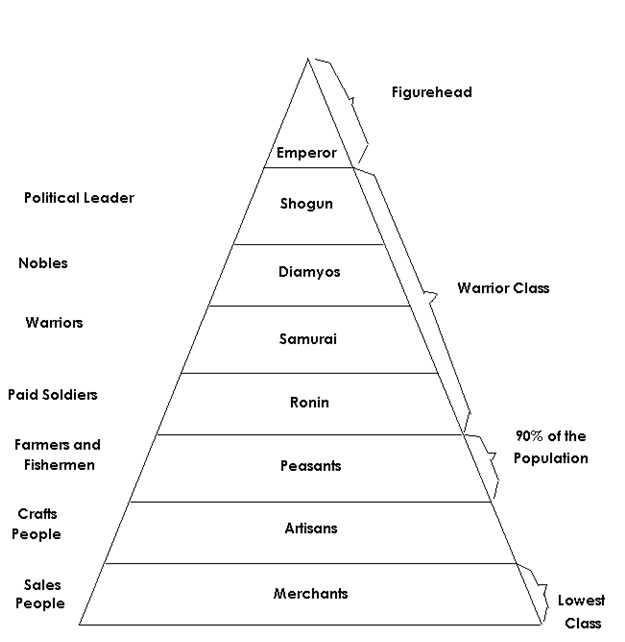
The Hierarchy of Japan Japan Sakura no kuni
In probability samples of Japanese (N 1⁄4 1,027) and U.S. (N 1⁄4 1,805) adults, subjective social status more strongly predicted life satisfaction, positive affect, sense of purpose, and self-acceptance in the United States than in Japan.
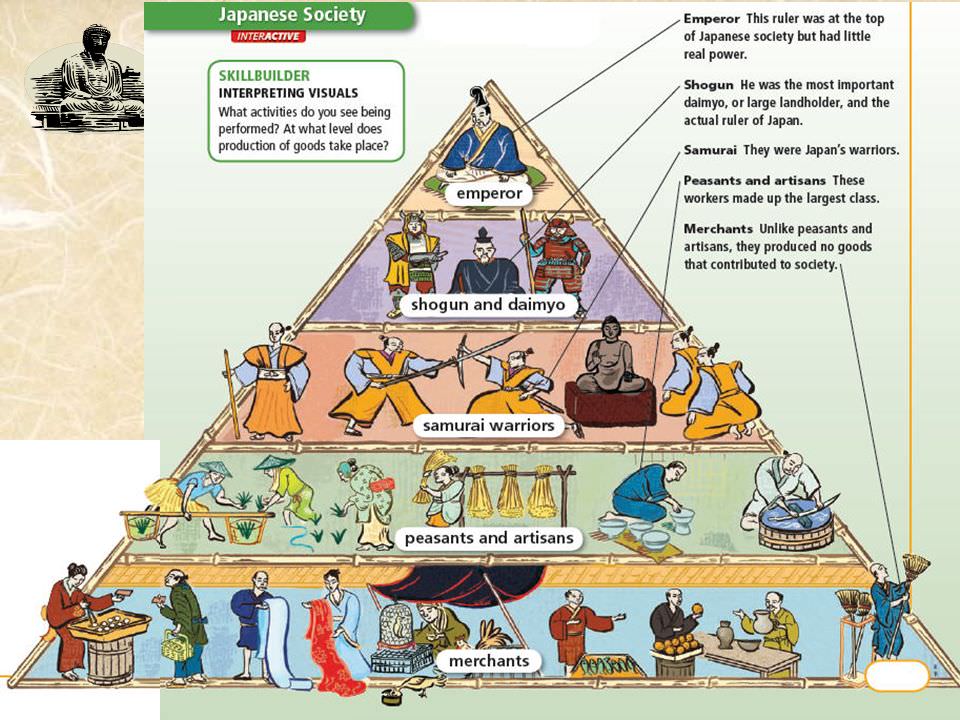
Lesson 5 Japan International School History
Feudal Japanese society, which existed from the 12th to the mid-19th century, was based upon a ridge class system that determined each person's role. Similar to other elements of Japan at the time, the social structure was adopted from Chinese society, and had the same number of broad classes of people: four. Each of these classes are explained in more detail below.
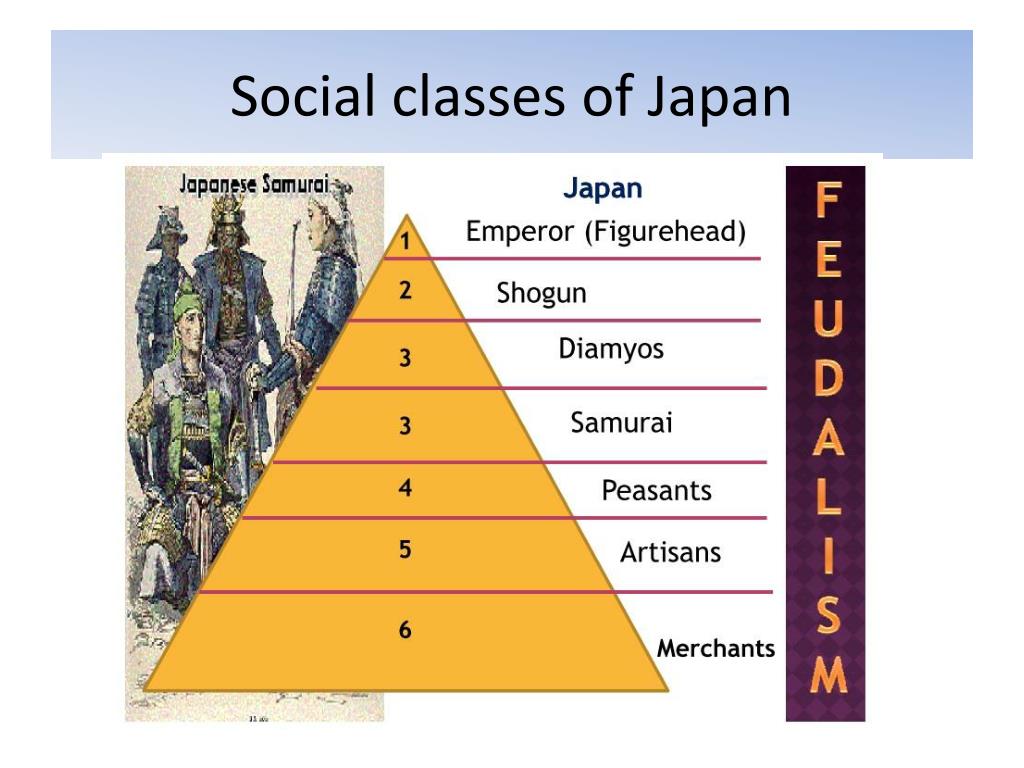
PPT Japan The land of the rising sun PowerPoint Presentation, free download ID5457459
The JSEI and JSSI showed results similar to those found in European societies and so demonstrated their validity and usefulness for investigating social stratification in Japan, thereby extending European findings on social stratification into an Asian society. Issue Section: Articles Introduction
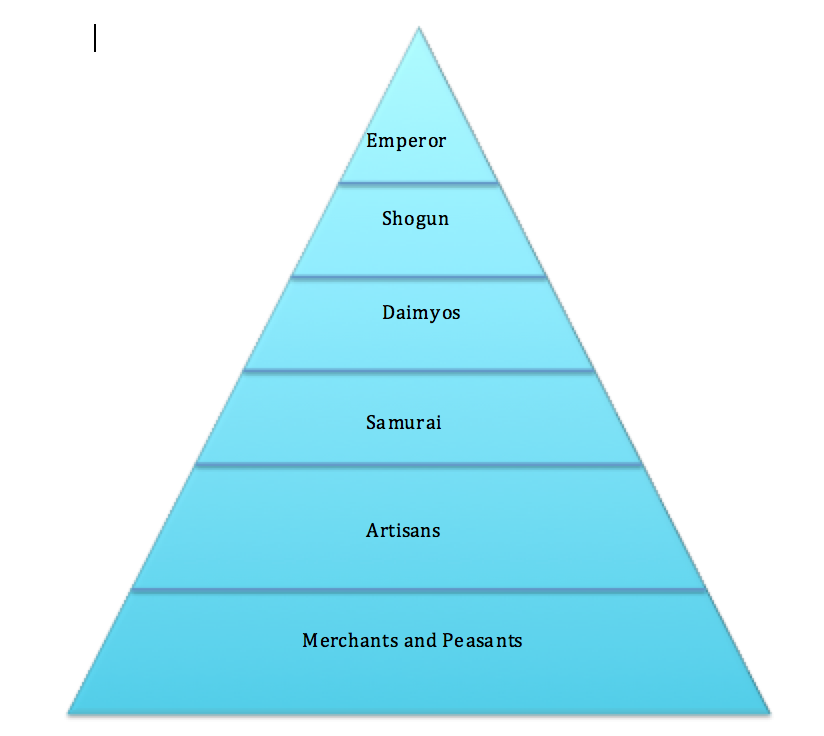
Chapter 2 Japan Under the Shoguns
Government and society Constitutional framework Diet The Diet building, Tokyo. Japan's constitution was promulgated in 1946 and came into force in 1947, superseding the Meiji Constitution of 1889.
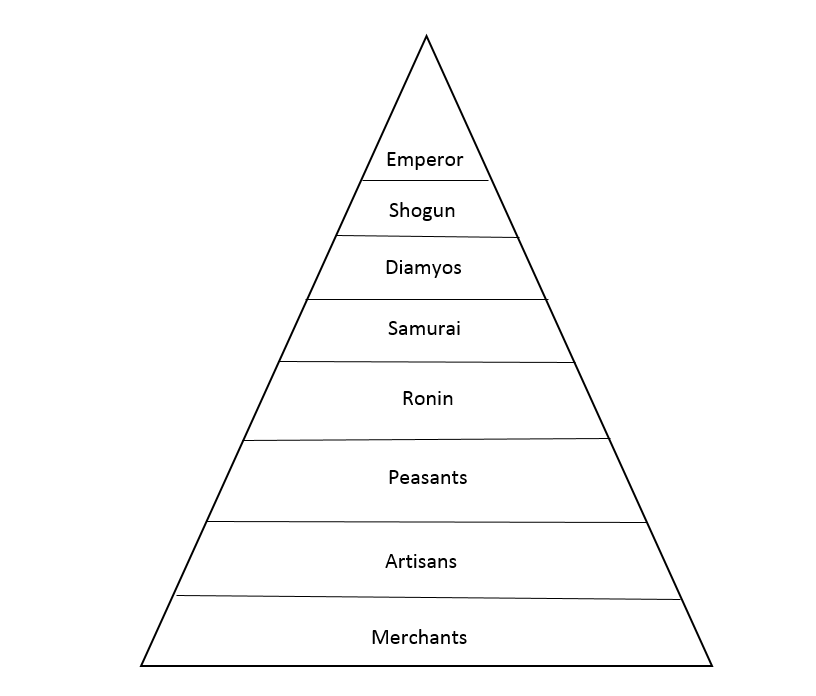
Hierarchy Shogunate Japan
Japanese people were assigned into a hierarchy of social classes based on the Four Occupations that were hereditary. The Emperor of Japan and the kuge were the official ruling class of Japan but had no power. The shōgun of the Tokugawa clan, the daimyō, and their retainers of the samurai class administered Japan through their system of domains.
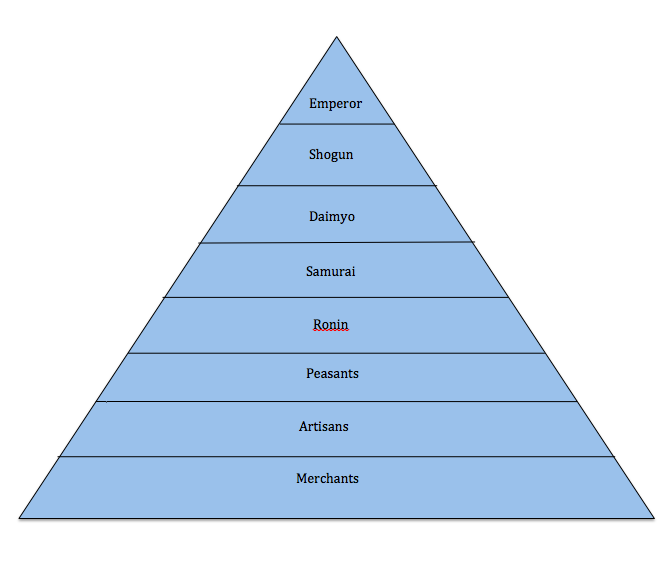
Hierarchy of Japanese feudal society
Principles of Japanese social structure Conclusion—tradition and modernity BIBLIOGRAPHY Japan is the most important, if not the only, example of a non-Western country that has unmistakably entered the category of "modern industrial society ."